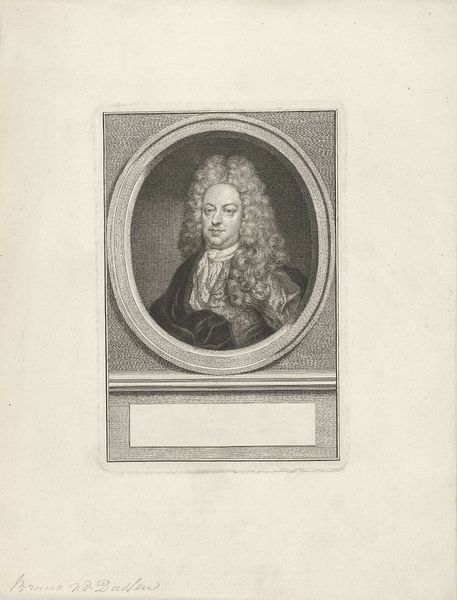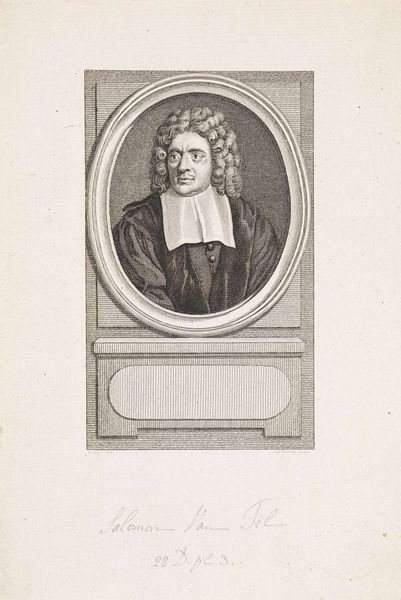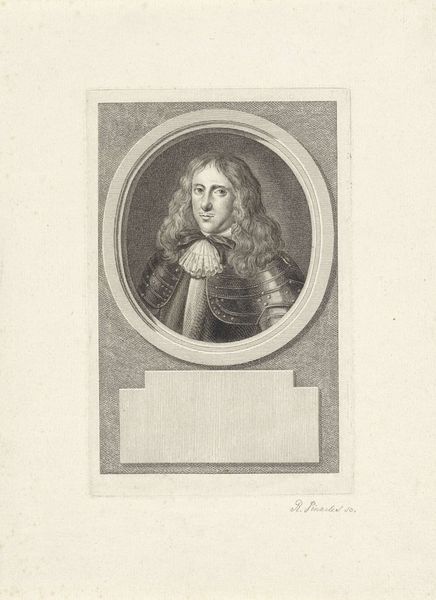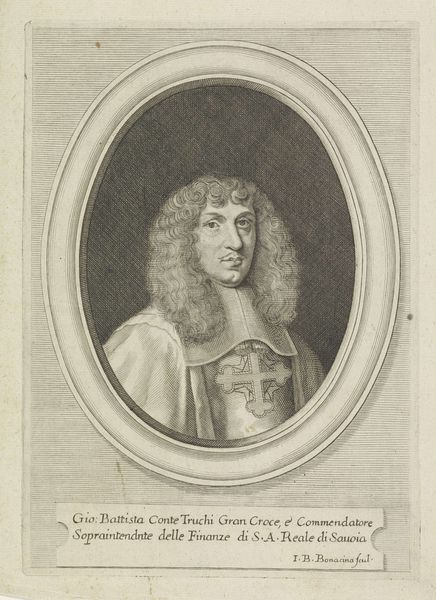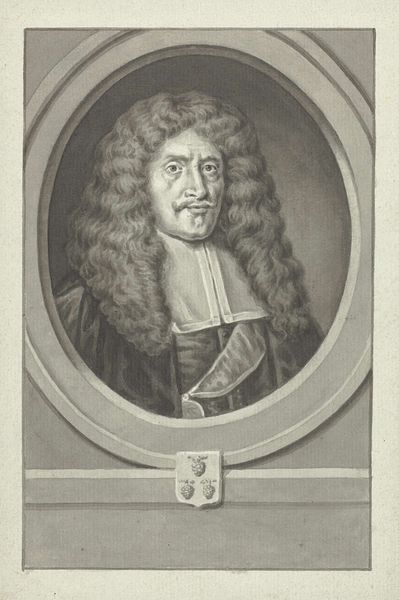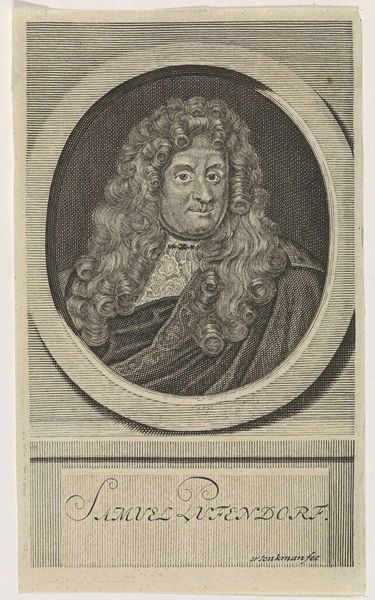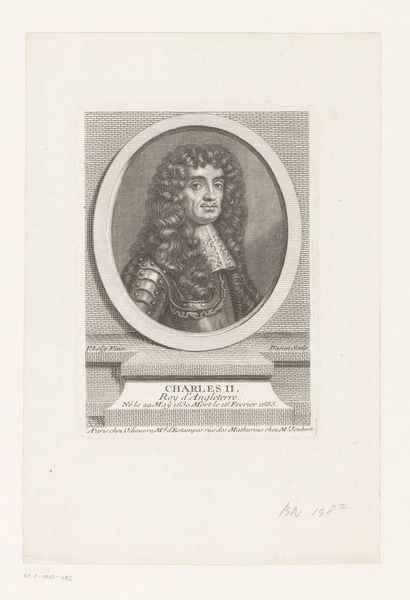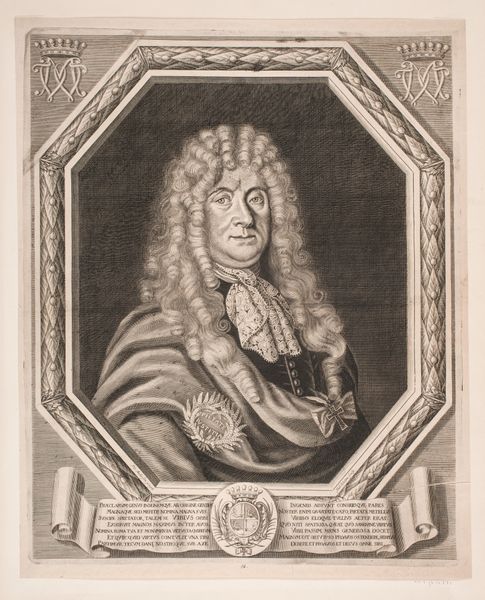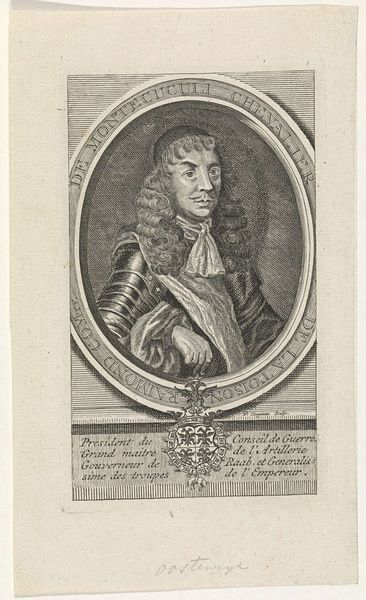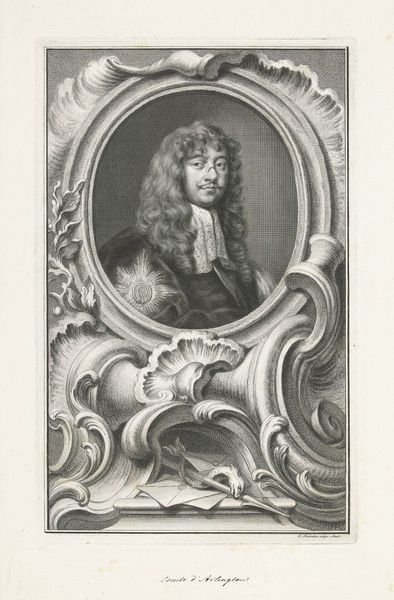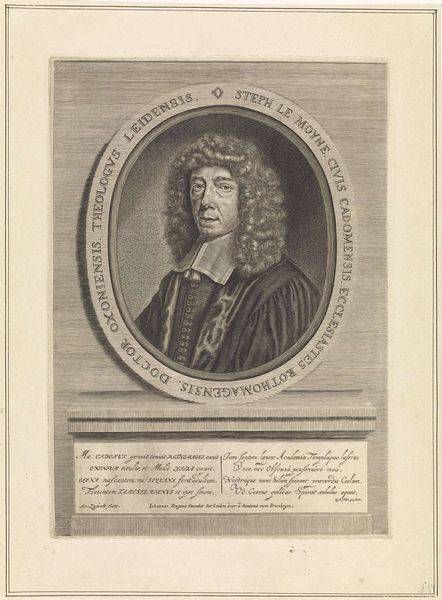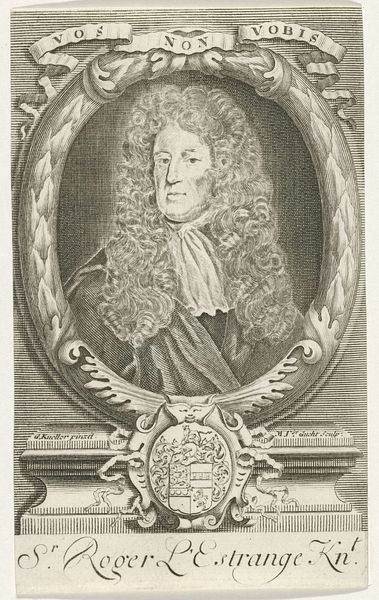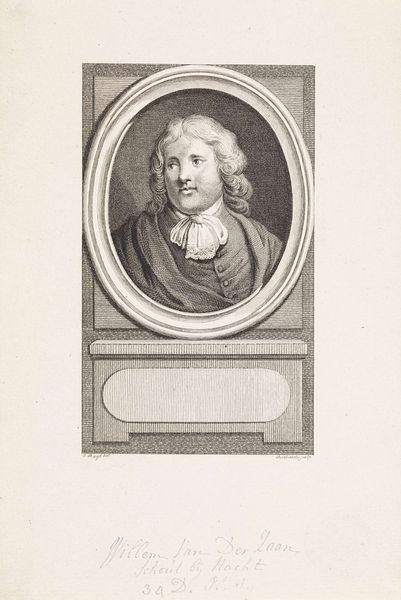
Dimensions: height 237 mm, width 153 mm
Copyright: Rijks Museum: Open Domain
Curator: Looking at this engraving by Reinier Vinkeles from 1789, “Portret van Nicolaas Heinsius,” my first thought is how incredibly composed it is, this man framed within frames. Editor: It strikes me as almost mournful. The grey scale creates a stark contrast, emphasizing the somberness of the sitter's expression. It is more than a likeness, isn’t it? A window to a world gone by? Curator: Absolutely. Heinsius, as you can guess, was an important scholar. But let us not pass over Vinkeles’ skill. Engravings such as this served a vital role. It acted almost like social media today. Before photography, it distributed imagery that carried so much weight in political and intellectual circles. Consider the very Baroque cascade of his hair, meticulously rendered in line. Editor: And that ruffled collar, such an overt symbol of status! Though somewhat muted in the grayscale print, these elements surely resonated deeply with the social structures of the era, marking Heinsius as an emblem of the scholarly elite. One wonders how his contemporaries perceived such deliberate displays of status. Did it reinforce social cohesion or breed resentment? Curator: Very complex, of course. It solidifies not only status but an aspirational identity tied to learning and power, particularly for an expanding literate class. We look back and sometimes simplify, but images like this were very powerful cultural objects in circulation. Engravings reproduced existing works of art or famous men so these would live on beyond a canvas accessible only to some. Editor: It's intriguing how the visual language of power remains so consistent. The carefully constructed image— the portrait, in this case— used to project an aura of authority. We've simply adapted our methods in the age of digital media. Curator: Right, exactly. Symbols shift and mutate, but the underlying psychological principles— the need for leaders, for idols—these endure. It’s why images continue to have power, to move and control. It makes you wonder, looking back, what meanings will future viewers attribute to our own art? Editor: Indeed, a fitting question on which to end our contemplation here.
Comments
No comments
Be the first to comment and join the conversation on the ultimate creative platform.
